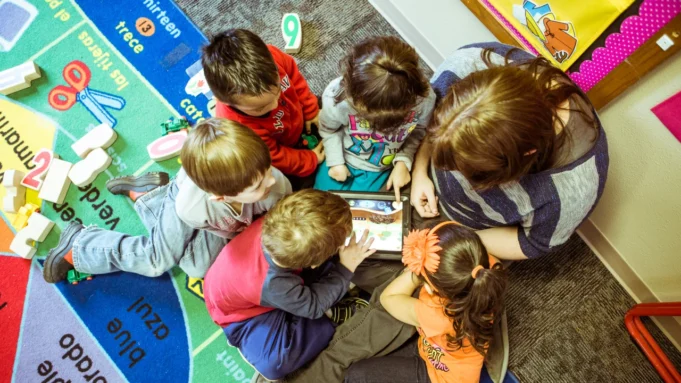Early childhood education is pivotal in shaping the future of individuals and society. Establishing a strong foundation for young minds demands dedicated educators, an engaging curriculum, and strategic financial management.
Strategic financial management is vital for the success of early childhood education (ECE) programs, ensuring efficient resource allocation, goal achievement, and overall sustainability. Key elements include comprehensive budgeting covering staffing, facilities, materials, and administrative costs.
This article delves into the significance of strategic financial management in early childhood education and its contribution to the success and sustainability of educational institutions for young learners.
Budgeting for Educational Excellence

Budgeting for educational excellence is a crucial element of strategic financial management in early childhood education. A well-thought-out budget is the cornerstone for efficiently allocating resources, ensuring that every facet of the learning environment receives sufficient funding. This encompasses investments in quality teaching staff, educational materials, and maintaining a conducive physical space for young learners.
Knowing the average childcare cost in the area can help parents prepare for their children’s future. Parents can anticipate the financial commitment required for childcare services and incorporate it into their monthly or yearly budgets. This foresight reduces the risk of unexpected financial strain. If you’re in Melbourne, you can check out government resources, reliable sites providing comparative data, or visit website for a comprehensive cost breakdown.
Moreover, a comprehensive budget enables institutions to plan for contingencies and unexpected challenges, such as emergencies or the need for infrastructure repairs. This financial planning allows early childhood education providers to navigate uncertainties while upholding a high standard of education for their students.
Setting a budget for competitive salaries and professional development programs ensures the recruitment and retention of skilled and motivated teaching staff. Budgeting also includes age-appropriate books, learning materials, and technological tools to enriches the educational resources available to young learners.
Diversifying revenue sources, including government grants, private donations, and community partnerships, contributes to financial stability. Establishing regular financial reporting systems and conducting analyses to identify trends, improvement areas, and growth opportunities. Long-term financial planning aligns with strategic goals, considering factors like enrollment projections and facility needs. Additionally, managing financial risks, including a contingency fund for unexpected expenses, is crucial.
Enhancing Educational Resources

Effective early childhood education requires a rich and diverse set of educational resources. These resources include age-appropriate books, learning materials, technological tools, and interactive activities. Strategic financial management involves allocating funds to regularly update and expand these resources, aligning them with the evolving needs of the curriculum.
Investing in educational resources allows institutions to create an engaging environment for young minds, promoting a love for learning from an early age. Staying abreast of advancements in educational technology ensures that early childhood education remains relevant and prepares children for the challenges of the 21st century.
Conduct thorough research on available technologies, considering both hardware and software options, and develop a strategic plan outlining the implementation process, timeline, and associated costs. Allocate a budget for training programs to ensure that educators are proficient in using new technologies.
Evaluate and invest in the necessary infrastructure to support technology integration, including reliable internet access, hardware maintenance, and security measures. Explore free or open-source educational resources and tools to reduce costs. Collaborate with other educational institutions or organizations to negotiate bulk purchases or shared services.
Research and apply for grants that support the integration of technology in early childhood education. Consider the total cost of ownership over the lifecycle of the technology, including initial purchase costs, maintenance, upgrades, and eventual replacement. Allocate funds for ongoing monitoring and evaluation of the effectiveness of the technology implementation for quality education.
Build flexibility into the budget to adapt to changing technological needs or unforeseen challenges. By managing the budget effectively and considering these factors, educational institutions can integrate technology into early childhood education, providing children with valuable learning experiences while maintaining financial sustainability.
Maintaining Safe and Stimulating Physical Spaces
The physical environment where early childhood education occurs is crucial for the overall well-being and development of young learners. Strategic financial management involves budgeting for the maintenance and improvement of physical spaces to ensure they are safe, clean, and conducive to learning.
Despite budget considerations, cost-effective strategies can be implemented to create a secure learning environment. Start by providing comprehensive training for staff on safety protocols, emergency procedures, and supervision techniques. Conduct thorough background checks for all staff members and volunteers to ensure a clean record.
Develop and implement clear safety policies and procedures covering emergencies, pick-up/drop-off, playground safety, and health precautions. Establish a well-thought-out emergency preparedness plan, conducting drills regularly to ensure familiarity.
Regularly maintain and inspect the facility to address safety hazards, including playground equipment and cleanliness. Implement health and hygiene practices to prevent illness spread and have secure access controls in place. Ensure the availability and regular check of safety equipment, and encourage parental involvement in safety initiatives.
Explore community partnerships for additional resources and consider insurance coverage updates to protect against risks. Although initial costs may be involved, the long-term benefits of a safe learning environment are invaluable, and many measures involve ongoing practices without significant financial investment.
Community Engagement and Partnerships

Successful early childhood education is not confined to the walls of the institution; it extends into the community. Strategic financial management involves allocating resources for community engagement initiatives and partnerships. This may include organizing workshops for parents, collaborating with local businesses for educational sponsorships, or establishing partnerships with other educational institutions.
Community engagement fosters a sense of belonging and support for the educational institution, creating a network of stakeholders invested in the success of early childhood education. Financial resources directed toward community partnerships can result in additional support, both in terms of funding and community involvement, ultimately enhancing the overall educational experience for young learners.
Conclusion
Strategic financial management is a cornerstone of successful early childhood education. By carefully planning and allocating resources, educational institutions can create an environment that nurtures the holistic development of young minds. From budgeting for educational excellence to investing in quality teaching staff and maintaining stimulating physical spaces, a well-managed financial strategy ensures the sustainability and success of early childhood education. As we recognize the importance of early childhood education in shaping the future, it is imperative to prioritize and invest in strategic financial management for the benefit of the youngest members of our society.















